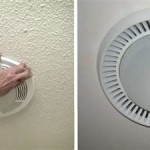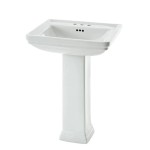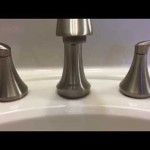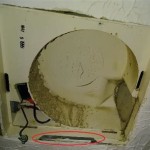Is Mold in Bathroom Ceiling Dangerous?
The bathroom, with its high moisture levels and warm temperatures, is a breeding ground for mold. While some mold growth may seem harmless, mold on the bathroom ceiling poses a significant health risk. This article will explore the dangers of mold in the bathroom ceiling, discuss the causes of this growth, and provide guidance on preventing and addressing this issue.
Health Risks Associated with Mold
Mold exposure can lead to various health problems, particularly for individuals with pre-existing respiratory conditions like asthma or allergies. The following are some of the most common health risks associated with mold in the bathroom ceiling:
- Respiratory issues: Mold spores can irritate the lungs and airways, triggering coughing, wheezing, and difficulty breathing. They can also exacerbate asthma symptoms and lead to respiratory infections like sinusitis.
- Allergies: Mold can trigger allergic reactions, resulting in sneezing, runny nose, itchy eyes, and skin rashes. In some cases, mold allergies can lead to more severe reactions, such as anaphylaxis.
- Neurological problems: Some studies suggest a link between prolonged mold exposure and neurological issues like memory loss, headaches, and cognitive impairment.
- Other health problems: Other potential health risks associated with mold exposure include skin infections, eye irritation, and fatigue.
The severity of these health effects can vary greatly depending on the type of mold, the level of exposure, and individual sensitivity. However, it is essential to remember that any mold growth, particularly in indoor environments, should be taken seriously.
Causes of Mold in the Bathroom Ceiling
Mold thrives in moist environments, making the bathroom ceiling a prime location for growth. Understanding the common causes of mold in this area is crucial for effective prevention and remediation:
- Poor ventilation: Bathrooms often lack sufficient ventilation, allowing moisture to build up and create ideal conditions for mold spores to flourish. This can be exacerbated by long showers or baths, steaming hot water, and inadequate exhaust fans.
- Leaking pipes or fixtures: Leaks from pipes, showerheads, or faucets can introduce moisture to the bathroom ceiling, providing a constant source of water for mold growth. These leaks may be difficult to detect initially and could be contributing to mold growth without being noticed.
- Condensation: The warm, humid air in a bathroom can condense on cool surfaces, such as the ceiling, creating a layer of moisture that promotes mold growth. Condensation is particularly common in bathrooms with inadequate ventilation or during hot, humid weather.
- Water damage: Flooding or water damage can saturate the bathroom ceiling, providing a breeding ground for mold. Even a minor leak can leave behind moisture that creates a hospitable environment for mold growth.
It is important to note that mold can sometimes grow behind walls or under surfaces, making it challenging to detect early on. If you suspect mold growth in your bathroom ceiling, it is advisable to contact a professional for inspection and remediation.
Preventing Mold Growth in the Bathroom Ceiling
Preventing mold growth in the bathroom ceiling requires a proactive approach that addresses the conditions that foster mold growth. Here are some effective preventive measures:
- Improve ventilation: Ensure your bathroom has an adequately sized and functioning exhaust fan. Run the fan during and immediately after showers or baths to remove moisture from the air. Consider installing a humidity sensor to automatically activate the fan when moisture levels rise.
- Address leaks: Inspect your bathroom regularly for leaks from pipes, fixtures, or the roof. Repair any leaks immediately to prevent moisture accumulation in the ceiling.
- Control humidity: Keep the humidity levels in your bathroom below 50% to discourage mold growth. You can use a dehumidifier to reduce humidity levels, especially during humid weather.
- Regular cleaning: Clean your bathroom ceiling regularly with a mild bleach solution to kill existing mold spores and prevent new growth. Pay particular attention to corners and other areas where moisture tends to accumulate.
- Use a mold-resistant paint: When painting your bathroom ceiling, consider using a mold-resistant paint. This type of paint can help prevent mold growth by creating a barrier against moisture and mold spores.
By implementing these preventive measures, you can create an environment that is less hospitable to mold growth, protecting your health and the integrity of your home.

Black Mold On Your Bathroom Ceiling Read This First

Ceiling Mold Growth Learn The Cause And How To Prevent It Environix

Is Mold In Bathroom Ceiling Harmful The Shocking Truth

Mold On Bathroom Ceiling How To Remove From

Ceiling Mold Growth Learn The Cause And How To Prevent It Environix
What Causes Mould In The Bathroom And How To Prevent It

Mold On Bathroom Ceiling What To Do And When Call Branch Environmental

Mold On Bathroom Ceiling Wipe Out With Diy Remedies

Why Is There Black Mold On My Bathroom Ceiling Medics

My Bathroom Ceiling Has Black Mould Growing On It What Should I Do
Related Posts







